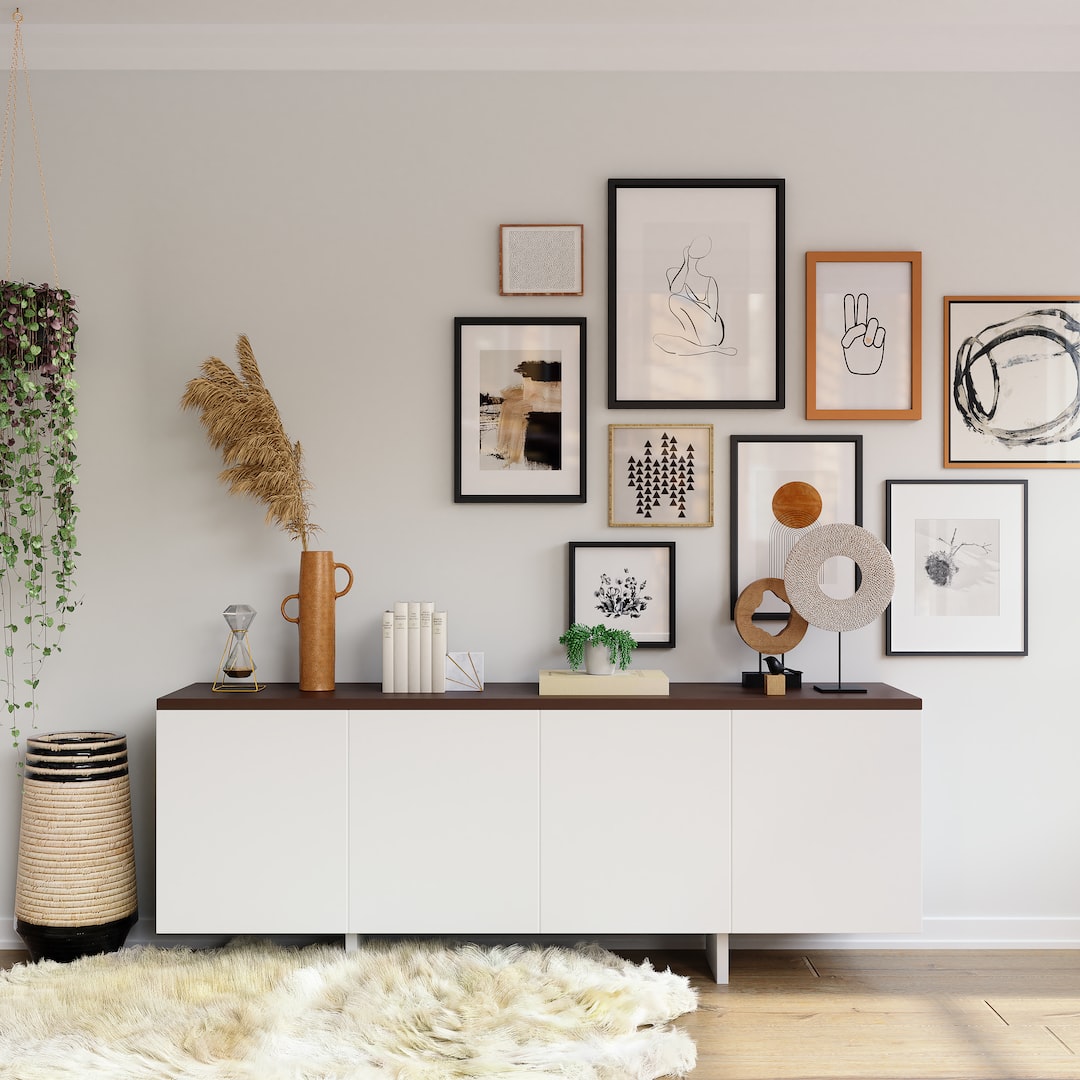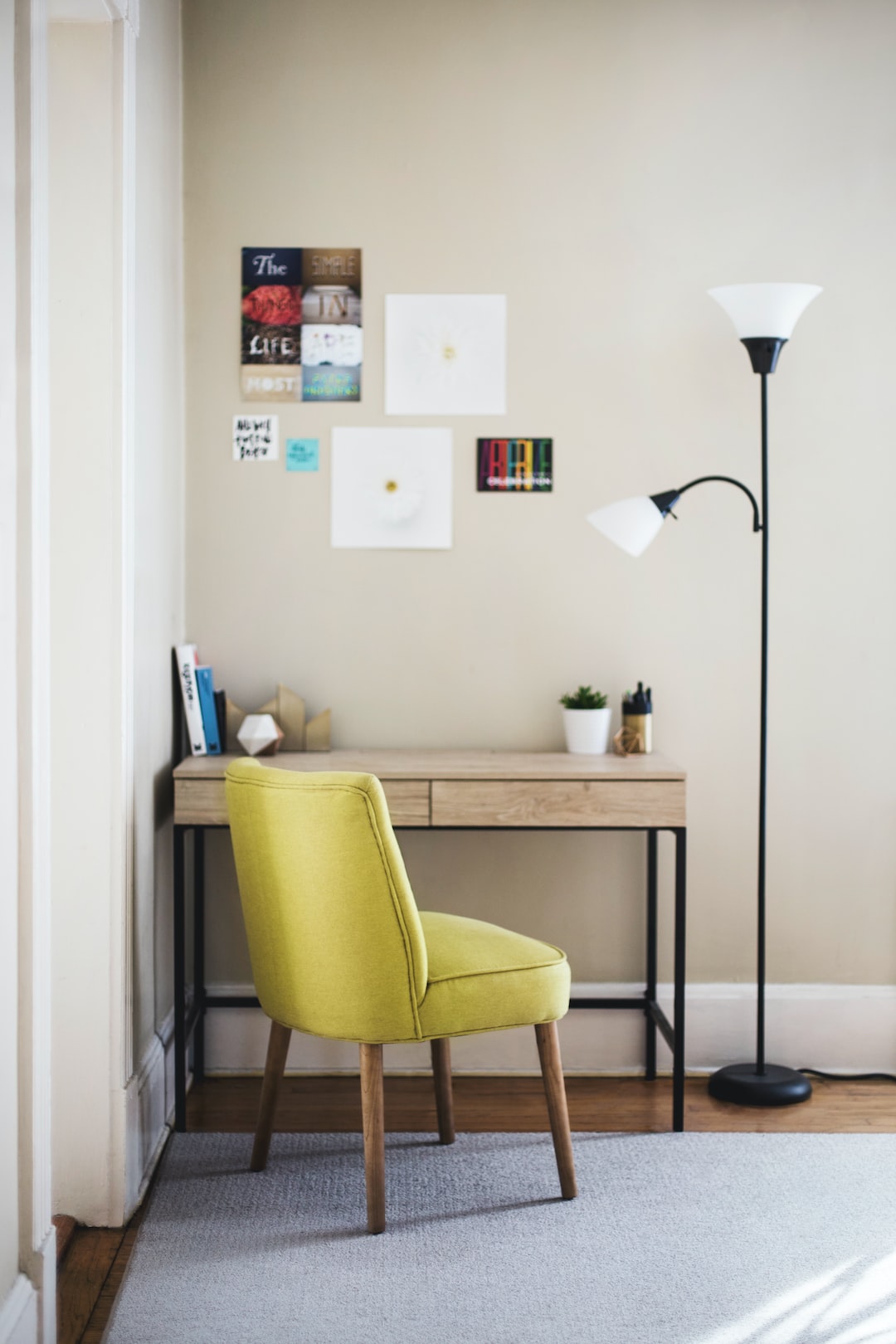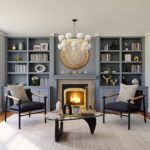Support our educational content for free when you purchase through links on our site. Learn more
How Should I Decorate My Room? [2024]
Introductory paragraph:
Imagine walking into a room that perfectly reflects your personality and style, a space that feels like a sanctuary and truly represents who you are. Decorating a room can be an exciting and creative process, but it can also feel overwhelming with so many options and decisions to make. That’s why we’re here to guide you through the process and help you create a room that you’ll love coming home to. In this article, we’ll share expert tips and advice on how to decorate your room, covering everything from finding your style to adding personal touches. So let’s dive in and transform your space into a haven that’s uniquely yours.
Table of Contents
- Quick Answer
- Quick Tips and Facts
- Background: The Art of Room Decoration
- Step 1: Discover Your Style
- Step 2: Assess Your Room’s Functional Needs
- Step 3: Consider the Room’s Users
- Step 4: Create a Wish List
- Step 5: Measure and Plan Your Layout
- Step 6: Gather Inspiration
- Step 7: Set a Budget
- Step 8: Harmonize with the Rest of Your Home
- Step 9: Start with a Focal Point
- Step 10: Create a Mood Board
- Step 11: Arrange Large Furniture Pieces
- Step 12: Add Accents and Accessories
- Step 13: Personalize with Your Story
- FAQ
- Conclusion
- Recommended Links
- Reference Links
Quick Answer
Decorating your room involves a step-by-step process that includes discovering your style, assessing your room’s functional needs, considering the room’s users, creating a wish list, measuring and planning your layout, gathering inspiration, setting a budget, harmonizing with the rest of your home, starting with a focal point, creating a mood board, arranging large furniture pieces, adding accents and accessories, and personalizing with your story. By following these steps, you’ll be able to create a room that reflects your personality and style.
Shopping Links: Home Decor Shopping Guides, Budget Home Decor, DIY Decor Projects, Home Furniture Reviews
Quick Tips and Facts
- Tip: When decorating a room, start with a blank canvas by removing all existing furniture and decor. This will allow you to envision the space with fresh eyes.
- Fact: According to a study by the University of Texas, the colors in your room can affect your mood and emotions. Choose colors that evoke the feelings you want to experience in that space.
- Tip: Don’t be afraid to mix and match different styles and textures. Eclectic decor can add visual interest and create a unique look.
- Fact: The average person spends about one-third of their life in their bedroom. Make it a space that promotes relaxation and restful sleep.
- Tip: Consider the flow and functionality of the room when arranging furniture. Leave enough space for easy movement and ensure that the furniture serves its intended purpose.
Background: The Art of Room Decoration

Decorating a room is more than just arranging furniture and hanging artwork. It’s an art form that allows you to express your personality and create a space that reflects your unique style. From choosing the right colors and textures to arranging furniture and adding personal touches, every decision you make contributes to the overall look and feel of the room.
Step 1: Discover Your Style
Finding your style is the first step in decorating your room. Your style should be a reflection of your personality and what makes you feel comfortable and happy. Here are some tips to help you discover your style:
- Look for Inspiration: Browse home decor magazines, websites, and social media platforms like Pinterest and Instagram to gather inspiration. Save images that resonate with you and look for common themes or elements.
- Consider Your Wardrobe: Your fashion choices can often provide clues about your personal style. Take a look at your wardrobe and identify any recurring colors, patterns, or styles. This can give you a starting point for your room decor.
- Ask Yourself Questions: What mood do you want your room to evoke? Do you prefer a minimalist or maximalist style? Are you drawn to modern or traditional designs? Asking yourself these questions can help you narrow down your style preferences.
Once you have a better understanding of your style, you can use it as a guide when making decor decisions for your room.
Step 2: Assess Your Room’s Functional Needs
Before diving into the fun part of decorating, it’s important to assess the functional needs of your room. Consider how you will be using the space and what specific requirements it needs to fulfill. Here are some factors to consider:
- Storage: Determine how much storage space you need for your belongings. Consider incorporating furniture pieces with built-in storage or adding shelves and baskets for organization.
- Furniture Placement: Think about the flow of the room and how you will move through the space. Arrange furniture in a way that allows for easy movement and accessibility.
- Lighting: Assess the natural lighting in the room and consider adding additional lighting fixtures to ensure adequate illumination for different activities.
By addressing the functional needs of your room, you can create a space that not only looks beautiful but also serves its purpose effectively.
Step 3: Consider the Room’s Users
When decorating a room, it’s important to consider the needs and preferences of the people who will be using the space. Whether it’s a bedroom, living room, or shared space, take into account the following factors:
- Children: If you have children, consider their safety and comfort when choosing furniture and decor. Opt for durable materials and child-friendly designs.
- Pets: If you have pets, choose furniture and fabrics that are pet-friendly and easy to clean. Avoid delicate materials that can be easily damaged.
- Family Preferences: Discuss with your family members their preferences and ideas for the room. Incorporate their input to create a space that everyone can enjoy.
By considering the room’s users, you can create a space that caters to everyone’s needs and ensures a harmonious environment.
Step 4: Create a Wish List
Creating a wish list is an essential step in the decorating process. It helps you prioritize your needs and desires for the room. Here’s how to create a wish list:
- Brainstorm: Take some time to brainstorm and write down all the elements you would like to include in your room. This can include furniture, decor items, colors, patterns, and textures.
- Prioritize: Once you have your list, prioritize the items based on their importance and feasibility. Consider your budget and the size of the room when determining what can realistically be included.
- Consult Others: If you share the room with someone else, consult them and incorporate their ideas into the wish list. This ensures that everyone’s preferences are taken into account.
Creating a wish list helps you stay focused and organized throughout the decorating process.
Step 5: Measure and Plan Your Layout
Measuring your room and planning the layout is crucial for creating a well-designed space. Here’s how to do it:
- Measurements: Measure the dimensions of your room, including the length, width, and height. Note any architectural features such as windows, doors, and alcoves.
- Furniture Placement: Use graph paper or an online room planner tool to create a scaled drawing of your room. Experiment with different furniture arrangements to find the most functional and visually pleasing layout.
- Traffic Flow: Consider the flow of movement in the room. Ensure that there is enough space for people to move around comfortably without obstacles.
By measuring and planning your layout, you can optimize the use of space and create a room that feels balanced and well-proportioned.
Step 6: Gather Inspiration
Gathering inspiration is an important step in the decorating process. It helps you visualize your ideas and find inspiration for color schemes, furniture styles, and decor elements. Here are some ways to gather inspiration:
- Online Platforms: Browse home decor websites, blogs, and social media platforms like Pinterest and Instagram. Save images that inspire you and create mood boards to visualize your ideas.
- Magazines and Books: Flip through home decor magazines and books for inspiration. Tear out pages or bookmark ideas that resonate with you.
- Real-Life Inspiration: Look for inspiration in the world around you. Take walks in nature, visit art galleries, or explore different neighborhoods to find unique design ideas.
Gathering inspiration allows you to explore different styles and ideas, helping you create a room that is uniquely yours.
Step 7: Set a Budget
Setting a budget is an important part of the decorating process. It helps you prioritize your spending and make informed decisions about where to allocate your funds. Here’s how to set a budget:
- Determine Your Total Budget: Decide on the total amount you are willing to spend on decorating your room. This will be your starting point for making budget allocations.
- Allocate Funds: Break down your budget into different categories such as furniture, decor, paint, and accessories. Allocate funds based on your priorities and the estimated costs of each category.
- Research Prices: Research the prices of different items and materials to get an idea of how much you will need to spend. This will help you make realistic budget allocations.
Setting a budget ensures that you stay within your financial means and make smart purchasing decisions.
Step 8: Harmonize with the Rest of Your Home
When decorating a room, it’s important to consider the overall aesthetic of your home. Create a cohesive look by harmonizing the decor of your room with the rest of your home. Here’s how:
- Color Palette: Choose a color palette that complements the colors used in other rooms of your home. This creates a sense of flow and continuity.
- Style Consistency: Maintain a consistent style throughout your home. If you have a modern aesthetic, carry that style into your room decor. If your home has a more traditional look, incorporate elements of that style into your room.
- Materials and Textures: Use similar materials and textures in your room that are found in other areas of your home. This creates a sense of unity and cohesiveness.
By harmonizing your room with the rest of your home, you create a seamless transition from one space to another.
Step 9: Start with a Focal Point
A focal point is a key element in a room that draws attention and sets the tone for the space. It can be a piece of artwork, a statement furniture piece, or a striking architectural feature. Here’s how to start with a focal point:
- Choose a Focal Point: Select a focal point that reflects your style and captures the essence of the room. It should be a piece that you love and want to showcase.
- Build Around the Focal Point: Use the focal point as a starting point for your room’s design. Choose colors, patterns, and textures that complement and enhance the focal point.
- Balance the Room: Ensure that the other elements in the room don’t compete with the focal point. Create a balance by choosing complementary pieces that support and enhance the focal point.
Starting with a focal point helps you create a cohesive and visually appealing room design.
Step 10: Create a Mood Board
A mood board is a visual representation of your room’s design concept. It helps you see how different elements come together and ensures that your vision is cohesive. Here’s how to create a mood board:
- Gather Inspiration: Use the images and ideas you gathered during the inspiration phase to create a collection of visuals that represent your desired style and aesthetic.
- Arrange the Elements: Arrange the images, fabric swatches, paint samples, and other materials on a physical or digital board. Experiment with different combinations and layouts.
- Evaluate the Mood Board: Step back and evaluate the mood board as a whole. Does it reflect the style and mood you want to achieve? Make adjustments as needed.
Creating a mood board allows you to visualize your ideas and make informed decisions about your room’s design.
Step 11: Arrange Large Furniture Pieces
When arranging furniture in your room, it’s best to start with the larger pieces first. This allows you to establish the room’s layout and create a functional space. Here’s how to arrange large furniture pieces:
- Consider the Room’s Flow: Arrange the furniture in a way that allows for easy movement and traffic flow. Ensure that there is enough space to walk around and access other areas of the room.
- Create Conversation Areas: If your room is used for socializing, create conversation areas by arranging furniture in a way that encourages interaction. Place seating pieces facing each other to facilitate conversation.
- Balance the Room: Distribute the weight of the furniture evenly throughout the room. Avoid clustering all the furniture on one side, as it can create an unbalanced and visually heavy look.
By arranging large furniture pieces first, you establish the foundation of your room’s design and create a functional layout.
Step 12: Add Accents and Accessories
Accents and accessories are the finishing touches that bring your room to life. They add personality, texture, and visual interest to the space. Here’s how to add accents and accessories:
- Choose a Color Scheme: Select a color scheme for your accents and accessories that complements the overall color palette of the room. This creates a cohesive and harmonious look.
- Layer Textures: Incorporate different textures through pillows, throws, rugs, and curtains. This adds depth and visual interest to the room.
- Display Personal Items: Showcase personal items such as photographs, artwork, and mementos that tell your story and add a personal touch to the space.
By adding accents and accessories, you infuse your room with character and create a space that feels complete.
Step 13: Personalize with Your Story
The final step in decorating your room is to personalize it with your story. Incorporate elements that have sentimental value and reflect your interests and passions. Here’s how to personalize your room:
- Display Personal Collections: Showcase items that you’ve collected over the years, such as books, artwork, or travel souvenirs. These items add a personal touch and create a sense of nostalgia.
- Incorporate Hobbies and Interests: If you have hobbies or interests, find ways to incorporate them into your room’s decor. For example, if you love photography, display your favorite photographs on the walls.
- Tell Your Story: Use your room as a canvas to tell your story. Incorporate elements that reflect your heritage, values, and experiences.
By personalizing your room, you create a space that is uniquely yours and filled with meaning.
FAQ

What is the best way to decorate a room?
The best way to decorate a room is to follow a step-by-step process that includes discovering your style, assessing your room’s functional needs, considering the room’s users, creating a wish list, measuring and planning your layout, gathering inspiration, setting a budget, harmonizing with the rest of your home, starting with a focal point, creating a mood board, arranging large furniture pieces, adding accents and accessories, and personalizing with your story. By following these steps, you can create a room that reflects your personality and style.
Read more about “How do I Choose a House Decor? …”
How can I make my room look good?
To make your room look good, consider the following tips:
- Choose a color palette that complements the room’s purpose and your personal style.
- Use lighting to create ambiance and highlight key features.
- Incorporate a variety of textures and materials for visual interest.
- Arrange furniture in a way that promotes flow and functionality.
- Add accents and accessories that reflect your personality and add character to the space.
By paying attention to these details, you can create a room that looks good and feels inviting.
Read more about “How can I decorate my walls at home? …”
How do I choose bedroom decor?
When choosing bedroom decor, consider the following factors:
- Create a calming and relaxing atmosphere with soft colors and soothing textures.
- Choose comfortable and functional furniture pieces that meet your needs.
- Incorporate storage solutions to keep the room organized and clutter-free.
- Select bedding and linens that are comfortable and visually appealing.
- Personalize the space with artwork, photographs, and accessories that reflect your style and interests.
By considering these factors, you can choose bedroom decor that creates a peaceful and restful environment.
Read more about “How can I decorate my house naturally? …”
How can I decorate my one bedroom?
Decorating a one-bedroom space requires careful planning and consideration of the available space. Here are some tips:
- Maximize storage by using multifunctional furniture and incorporating built-in storage solutions.
- Use light colors and mirrors to create the illusion of a larger space.
- Choose furniture that is appropriately sized for the room to avoid overcrowding.
- Utilize vertical space by adding shelves or wall-mounted storage.
- Incorporate a cohesive color scheme and style throughout the room to create a unified look.
By implementing these strategies, you can make the most of your one-bedroom space and create a functional and visually appealing room.
Read more about “What Decorations Can I Put in My Room? …”
Conclusion

Decorating a room is an exciting and creative process that allows you to transform a space into a reflection of your personality and style. By following the step-by-step process outlined in this article, you can create a room that is both functional and visually appealing. Remember to discover your style, assess your room’s functional needs, consider the room’s users, create a wish list, measure and plan your layout, gather inspiration, set a budget, harmonize with the rest of your home, start with a focal point, create a mood board, arrange large furniture pieces, add accents and accessories, and personalize with your story. With these expert tips and advice, you’ll be well on your way to creating a room that you’ll love coming home to.
Recommended Links:
- CHECK PRICE on: Amazon | Walmart | Etsy
- Shop Home Decor on: Amazon | Walmart | Etsy
- Shop Furniture on: Amazon | Walmart | Etsy
- Shop Lighting on: Amazon | Walmart | Etsy
Reference Links:
For more home decor inspiration and tips, check out our Home Decor Shopping Guides, Budget Home Decor, DIY Decor Projects, and Home Furniture Reviews categories on Home Decorations™. And if you’re interested in learning more about choosing house decor, be sure to read our article on How do I Choose a House Decor? 2024.
Competitor Links:


